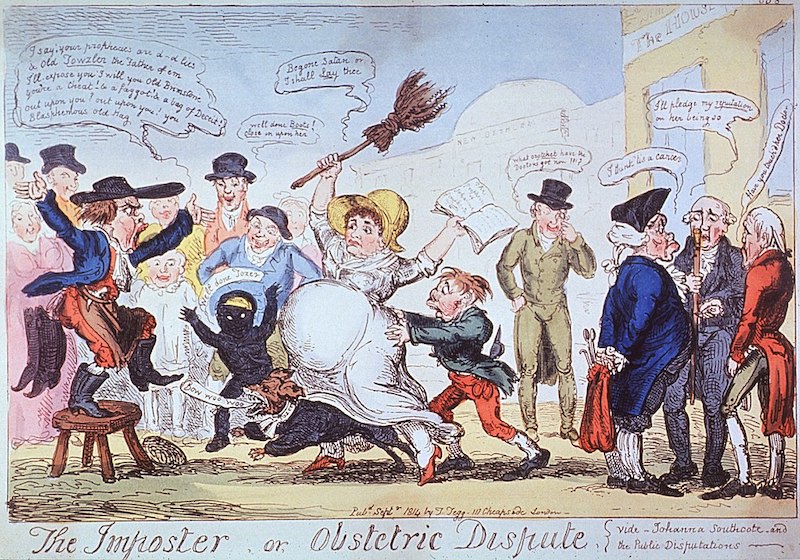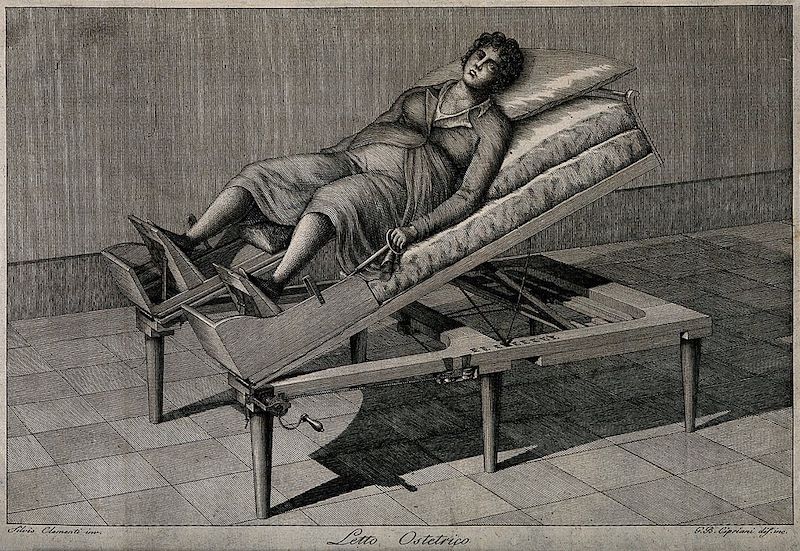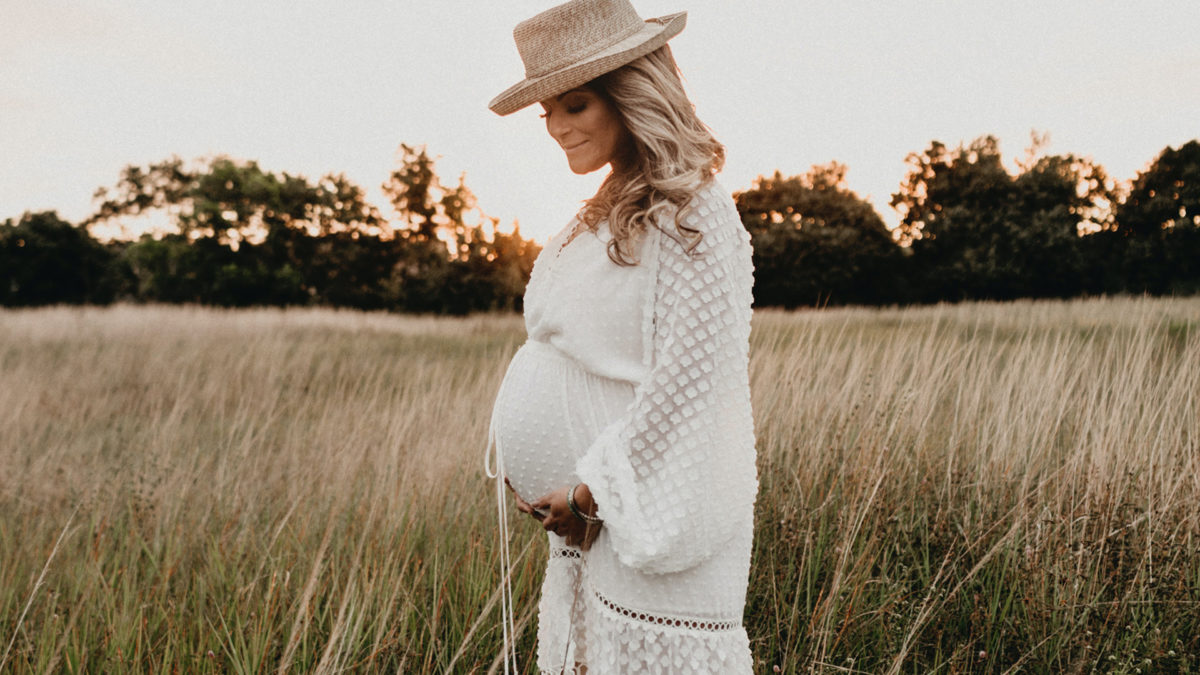Everything from how we announce our pregnancy to how we give birth has changed in a few short years. Let’s compare the difference.
Medical advances and social expectations have changed what it’s like to be pregnant over the years, but by how much? And is it always a good thing?
Let’s have a look at what it’s like to be pregnant then and now.
The pregnancy test

National Library of Medicine – History of Medicine, No restrictions, via Wikimedia Commons
Then
While the home pregnancy kit is a fairly recent invention, women have been peeing on things to tell whether they’re pregnant for more than 3000 years. The first known pregnancy tests took the form of barley or wheat seeds. Ancient Egyptian women would pee on the seeds, and if they sprouted, it was time to start weaving a Moses basket.
Fast forward to the start of the twentieth century and things became a little more scientific, but far less commonplace due to the cost and time required for a result. Around the 1930s, scientists discovered the ovaries of mice (and later rabbits and frogs) would enlarge if injected with a pregnant woman’s urine. So if you really wanted to find out if you were pregnant, you’d get your doctor to mail your urine to a lab, then wait at least a week to get the results. And yes, the mice and rabbits had to die in the process—how else to measure the size of their ovaries?
For everybody else, you wouldn’t definitively know you’re pregnant until you’d noticeably gained weight or felt the baby move—and you’d be several months pregnant by then.
Now
Pee on a stick in the comfort of your own bathroom. Wait a few minutes and squint to see if there’s a visible second line. Send picture of stick to friend with caption, “Can you see a second line?” If still in doubt, pee on another stick. Repeat as necessary.
Pregnancy support
Then
It takes a village to raise a child. And the village existed even before said child was born. As doula Lucy Hercus points out, up until a few generations ago, women were having children in their early 20s. This meant better support and advice from mum, “whose own experience probably was not that long before hers”.
Now
The average age of mothers has been rising over time and today, women are more likely to give birth in their early 30s. “Her life setting is entirely different,” says Lucy. “She’s likely moved away from home. She has likely experienced opportunities for work that have taken her maybe interstate, internationally . . . so she’s moving away not only from an information support base but she’s moved away from familial support.”
It’s no wonder online mothers’ groups are more popular now than ever, where it’s easier to tap into a fountain of knowledge and support from women closer to you geographically and experientially.
The pregnancy announcement
Then
People never really found out you were pregnant until they either saw you with a visible bump or with a baby in tow. Unless, of course, it was 1948 and you were British royalty. Then you’d issue a cryptic statement announcing you would “undertake no public engagements after the end of June” because well, you had the next heir growing in your belly. Otherwise, the next best thing would be a birth announcement in the local newspaper with all the juicy details (name, time and date of birth, gender and weight), but that would be after the baby was born.
Now
As the saying goes, if it’s not on social media, are you even pregnant? Today, many a Pinterest board is filled with pins of unique pregnancy announcement ideas which range from the hilarious, beautiful and even over-the-top with symbolism, to be shared with the world at the appropriate time.
And the festivities don’t end there—why should they? Having a baby is truly worth celebrating—with yet another announcement mid-pregnancy: The gender reveal.
The pregnancy diet
Then
In the 1920s, women were commonly told to restrict both their salt and food intake to limit their total pregnancy weight gain to no more than 6.8kg (today’s recommendation for someone within the normal weight range is 11 to 16kg). Doctors then believed excessive weight gain was related to swelling and potential pre-eclampsia. Smoking while pregnant was also pretty commonplace—and often seen as a way to reduce stress—until the 1950s when studies emerged about its detrimental effects on the unborn baby. And not too long ago, some midwives even advised women to regularly drink stout to boost their iron levels.
Now
Smoking and alcohol are major no-nos, and while you will want to or need to consume more food, it’s generally advised not to eat for two. Our nutritionist Amanda Muhl recommends eating normally in your first trimester, an extra two snacks in your second and three more snacks in your third (or one more, if you’re already having the two extra snacks before). Avoid cold, pre-prepared food such as salads, fruit, cold meats and soft cheeses, which have a higher chance of causing listeria.
The end of your pregnancy (aka delivery)

Giovanni Battista Cipriani, CC BY 4.0, via Wikimedia Commons
Then
We’re fairly certain Eve, the very first mum, experienced pain during delivery. After all, God did say, “I will make your pains in childbearing very severe; with painful labour you will give birth to children,” as a consequence of her disobedience. In 1591, poor Euphame MacCalzean was burned at the stake for taking a pain relief herb during the long and difficult labour of her twins. Also, you could forget having your husband hold your hand (or allowing the bones of his hands to be broken thanks to excessive squeezing) during the birth of your child. Men weren’t allowed to enter delivery rooms until the early 1970s.
Now
Midwives, doulas, obstetricians . . . we’re spoiled for choice about who we want helping us during our delivery. Then of course, there are all the pain relief options, including nitrous oxide, pethidine and the epidural. The mortality rates surrounding birth, labour or caesareans have also drastically reduced. And we realise why men weren’t allowed into delivery rooms: If they don’t faint, they’ll likely be very, very pale and sitting on a chair or the floor by the time baby is born.
How helpful was this article?
Click on a star to rate it!
4 / 5. 2
Be the first to rate this post!
Melody Tan
Related posts
Subscribe
Receive personalised articles from experts and wellness inspiration weekly!


